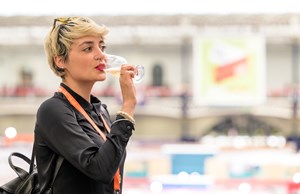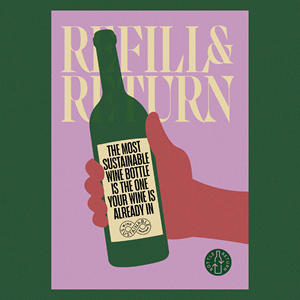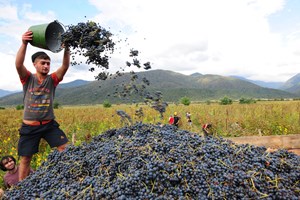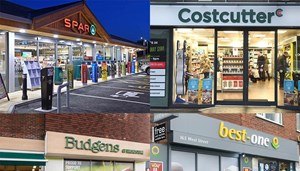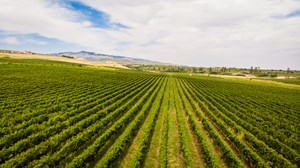We caught up with Eric Aracil, co-director in charge of exports for the Conseil Interprofessionnel des Vins du Roussillon (CIVR), ahead of his trip to the 2023 London Wine Fair (LWF). We ask him to explain what sets Roussillon apart and what we can expect from the Wines of Roussillon stand (B40) at LWF.
Q. Eric, you were born and raised in Roussillon, and grew up in a winegrowing family, but what has kept you there?
A. The beauty of our region, our Catalan roots and heritage, people and local culture, our food and our wines of course! Beyond family ties, all of these treasures make it really difficult to leave a place like Roussillon! There is so much energy and potential in the region that life – both professional and personal – is never boring. I have had the opportunity to work with such talented winemakers and winegrowers over the years, individuals and organisations from the region as well as outside talent drawn to Roussillon’s potential, that there was never any reason to go and look for opportunities or innovation elsewhere.
Q. What sets Roussillon apart as a wine region?
A. Our geographical location, firstly. Vineyards are nestled between land and sea in an amphitheatre open to the Mediterranean on one side and surrounded by 3 mountain ranges, the Pyrenees, the Albères and the Corbières. The cooling influence of the sea, of 8 different types of wind, vineyards on slopes and altitude amplitudes enable us to produce wines that retain freshness and balance. Unlike neighbouring regions, we are able to produce powerful structured reds that remain fresh with good balanced acidity, for example. We also produce fresh, fragrant and mineral whites as well as refined fruity rosés. And of course, Vins Doux Naturels (fortified sweet wines) that are unique in the world.
Roussillon’s crazy mix of micro-terroirs is another important asset. Geological upheavals churned Roussillon’s soils to create a mosaic of schistous, alluvial, pebbly, argilous soils... Dry and arid conditions have forced vines to plant very deep roots, to find balance and cope with extremes. This is giving our vineyards an advantage, especially in today’s warming world.
Q. How would you describe the winemaking culture in Roussillon?
A.In one word: pioneering. Roussillon has a strong viticultural heritage and has developed skills over centuries. Winemakers make full use of the production, aging techniques, and the skills developed over generations while continuing to innovate and push winemaking to the next level. From using amphorae and earthenware vessels to experimenting with aging, all techniques are used here. In the vineyards it is the same. Roussillon is at the forefront of biodynamic and organic practices and experimentation is rife across the region. Winemaking is very fluid and the mix of varietals (we have 24 main varietals used in Roussillon) allows winemakers to be creative and make a wide range of styles across the region’s 14 AOPs and 2 IGPS.
Q.What is the place for Roussillon wines in the UK?
A.The UK is currently the 1st export market for Roussillon’s Vins Doux Naturels and the 7th export market for still dry wines. It is a growing market for the wines of Roussillon both in terms of value and volume. Roussillon’s dry AOP wines dominate exports to the UK, accounting for 91% of sales.
Roussillon offers a wide range of quality wines and is able to suit different distribution channels. The region’s output has been transformed over the last couple of decades and Roussillon has now come of age. We think there is a place for the right Roussillon wines in all restaurants, independent merchants, as well as on supermarket shelves in the UK.
The majority of our dry AOPs and IGPs are particularly well suited to the on-trade and independent sector who are always on the lookout for unique, characterful whites, rosés and reds. Authentic terroir wines with a story. And, of course, sommeliers and independent retailers will also take time to talk about the region, and explain for instance how special a Côtes du Roussillon, Collioure, Banyuls, Sweet Maury or Rivesaltes Ambré can be – and, what food pairing to drink it with.
Q.What will be on show on the Wines of Roussillon stand at LWF?
A. Eight Roussillon producers will present a range of still dry wines and Vins Doux Naturels from our stand, B40, across the three days of the show. This will include wines from AOP Côtes du Roussillon, AOP Côtes du Roussillon Villages, IGP Côtes Catalanes, AOP Maury Sec, AOP Maury Doux, AOP Muscat de Rivesaltes and AOP Rivesaltes.
I will also present a masterclass on the White Wines of Roussillon on 16 May at 2.30pm.
See you there!

